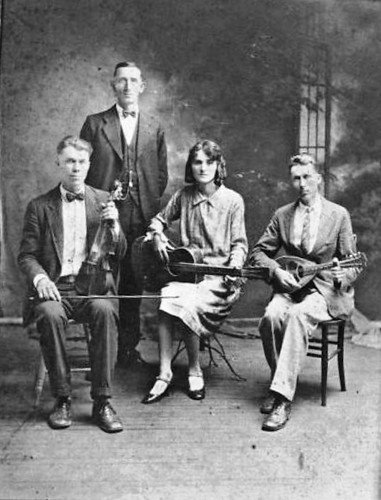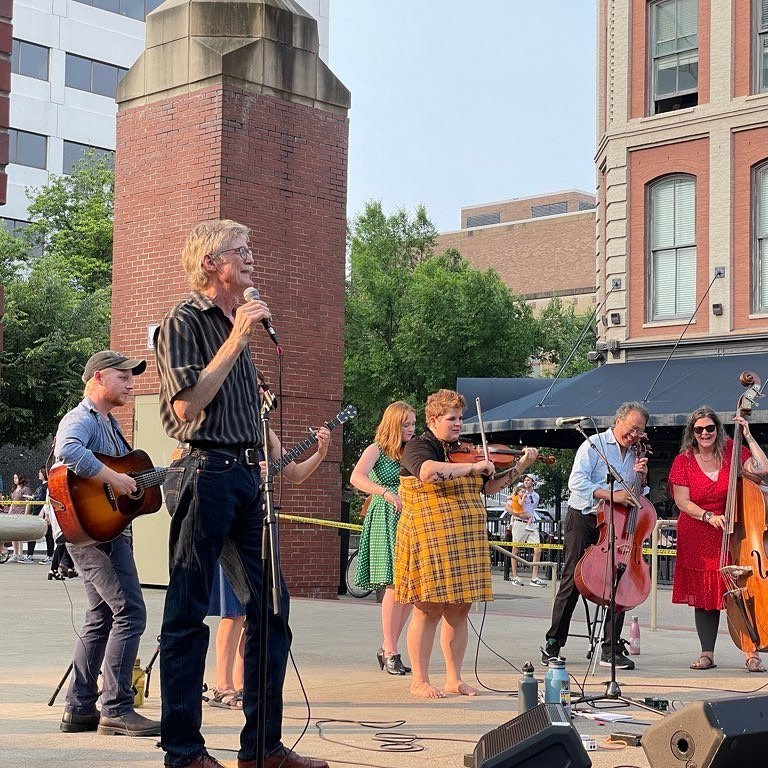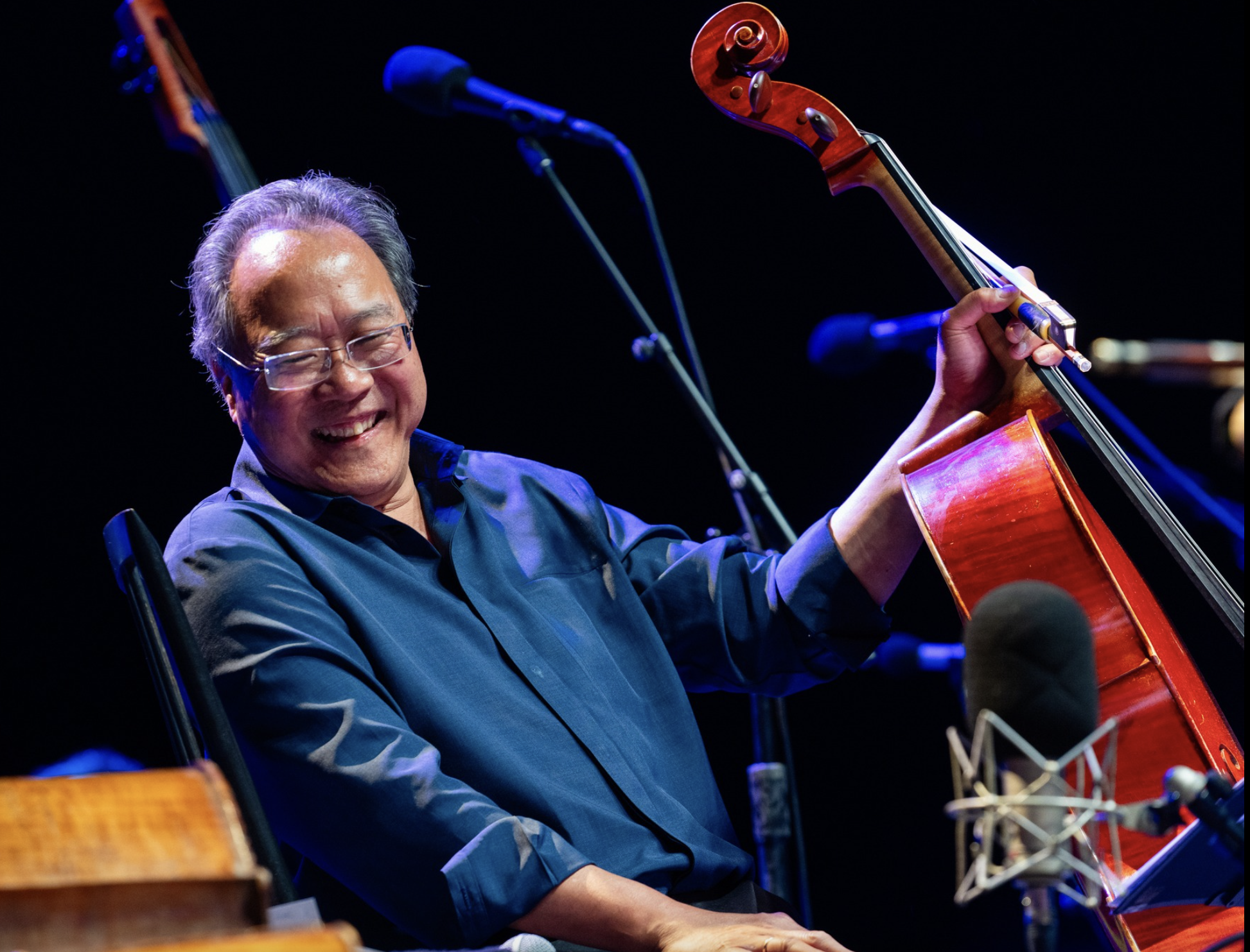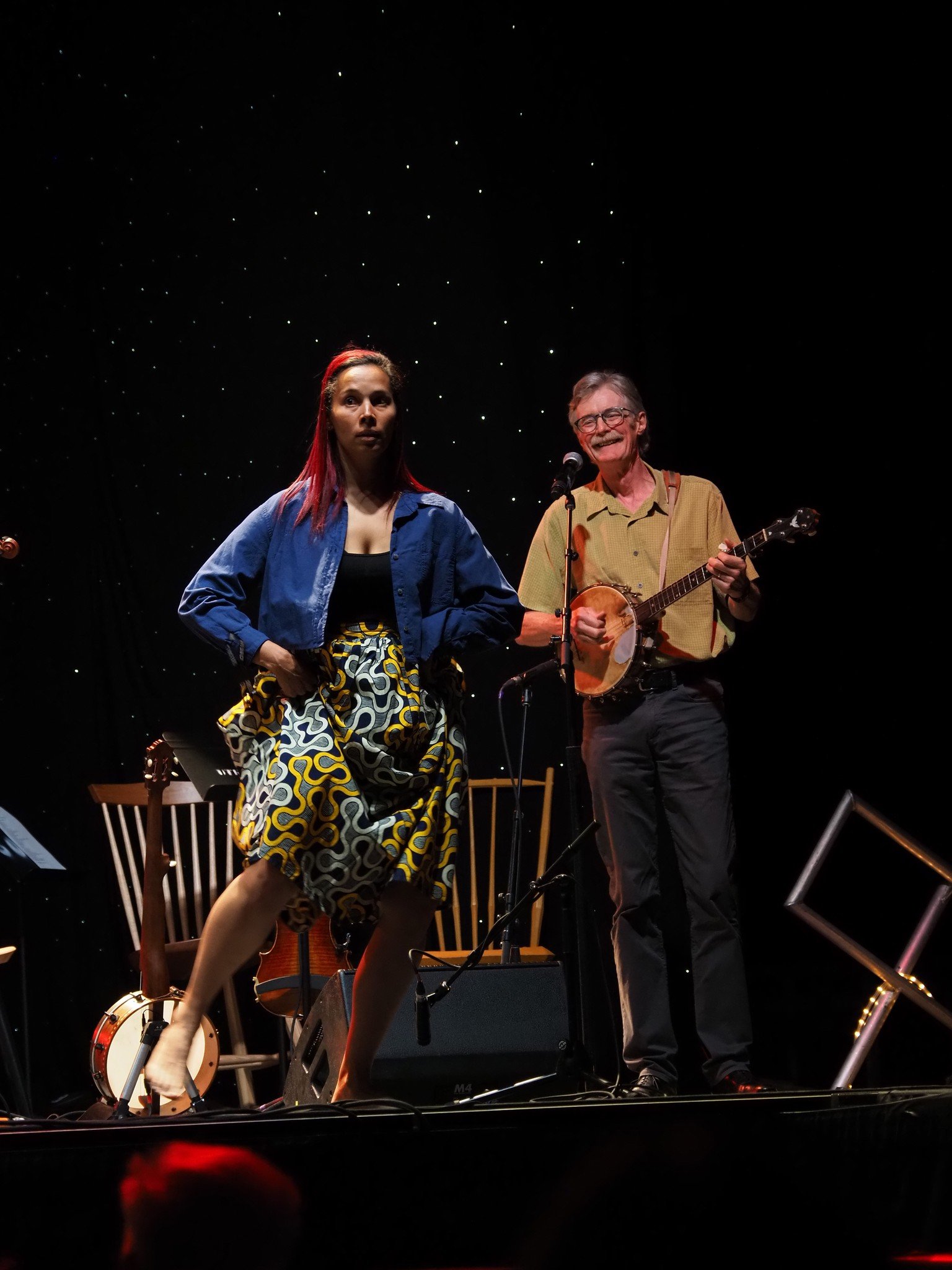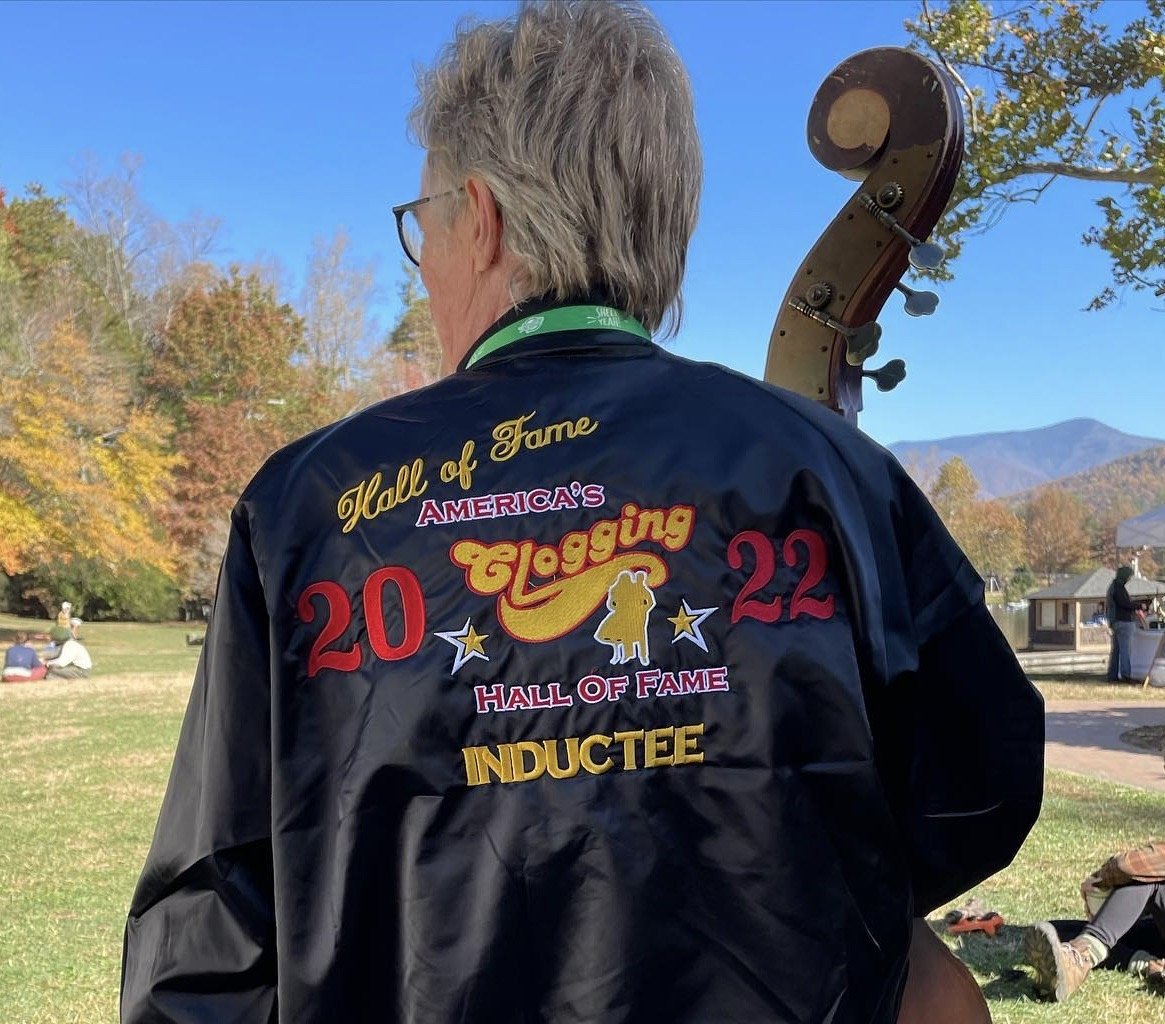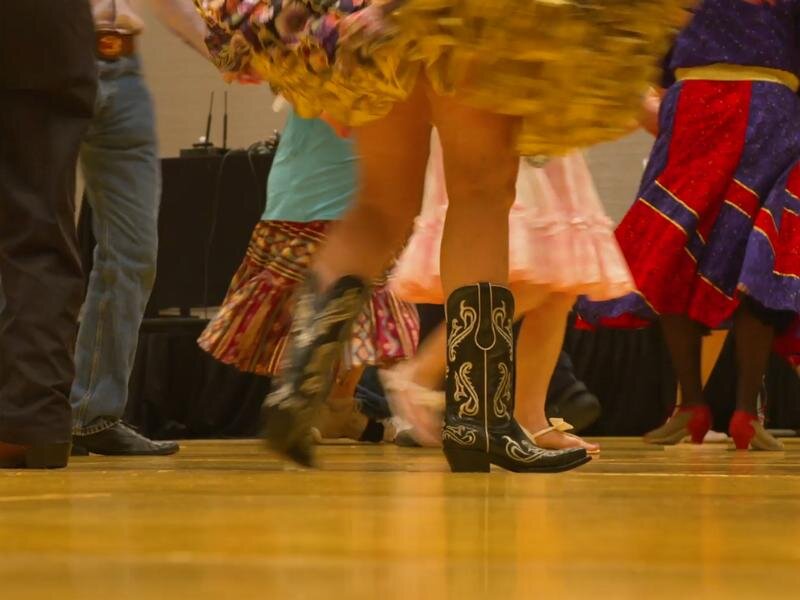Two years ago, in June 2021, I traveled to Oklahoma for the filming of Martin Scorsese’s new film Killers of the Flower Moon. In the film, Leonardo DiCaprio’s character marries an Osage woman, played by Lily Gladstone. They wanted a square dance in the wedding scene, and I was hired for the gig.
After COVID testing, wardrobe fitting, hair cutting, and beard shaving, I met with the film’s choreographer, Michael Arnold. Over the next few days, we taught twenty-eight local dancer extras how to square dance, waltz, and two-step. Many of them had never done a square dance before. I also taught one of the principal actors, Louis Cancelmi, how to flatfoot for the scene, and I showed him the “Rabbit Dance.”
The filming location was on a ranch on the Osage Indian Reservation about 45 minutes west of Bartlesville. It was beautiful landscape with rolling hills, groves of trees in narrow gullies, and wide open prairie, where I could see to the horizon in all directions. The three days on location were long, 12-hour days with a lot of waiting around, and I was dressed in a three-piece suit for the wedding scene in 90+ degree heat. My outfit was based on A. D. Coggins, the Mississippi dance caller, who recorded dance calls on the 1928 recording of “Tupelo Blues” by Hoyt Ming and his Pep Steppers.
It took two days to film the wedding scene, and eventually it was time for me to call the square dance and do a little flatfooting on camera. Except for the cameras, Scorsese and the film crew, the spectators, and Tantoo Cardinal sitting next to me, it didn’t feel much different from the numerous wedding dances I have called over the years. As the song goes, “All I had to do was act naturally!” When we were done with our one take, “Marty” (that’s what they call him) gave me a thumbs up and said, “good job.”
The music for the square dance was “Tupelo Blues,” recorded the previous month in a studio in New York, with Rayna Gellert (fiddle), Kieran Kane (guitar), David Mansfield (mandolin), and me on banjo. Rayna, Kieran, Nokosee Fields, Lucas Ross, and Elijah Ragsdale were there in Oklahoma as the dance band for the filming. It was exciting to have old-time music in a major film! In addition to our recording of “Tupelo Blues,” old-time music from classic 78-rpm recordings, including “Indian War Whoop” and Carter Family songs, are used in many scenes.
For two years now, I’ve been anxiously waiting for the film to be released, and I was excited to finally get to go see it the other day. It is a powerful film, a true story from the 1920s of greed, racism, and violence against the Osage by white people, who coveted their oil wealth. I recommend the film, but after two years of anticipation, I was personally disappointed that the wedding square dance was not included on screen - not even a glimpse of it. I suspect they were looking for ways to shave minutes off of this already lengthy, almost three-and-one-half hour film, rather than add more. Maybe showing a square dance wouldn’t have added to the main story, but it would have injected a moment of joy as a contrast in this otherwise tragic story.
I can be seen along with the other extras in the crowd under the dance tent at the wedding next to Robert De Niro. Louis Cancelmi does some very credible flatfooting as well as the “Rabbit Dance,” and my name appears in the credits for "Tupelo Blues," so I can see my off-camera contributions to the film.
It was a wonderful experience to have had a front row seat at a major Hollywood production and see what is involved. I believe that there were 273 “background” extras and dancers for this scene (including many local Osage people), plus several dozen actors (including me and the five musicians), maybe a hundred or so professional film people working on different crews, and who knows how many others in support jobs – hair and make-up people, handlers (who always seemed to know where we were and could get us anything we needed), drivers, caterers, COVID testers, and more. So perhaps there were 500 people there total, all masked and COVID tested numerous times (before do-it-yourself home tests were available), transported, and kept hydrated and fed. In addition of my off-camera contributions, it was an honor to have had an on-camera speaking role, even though I ended up on the “cutting room floor.” Maybe someday the wedding square dance will appear in an outtake reel.
My prior film experience was almost twenty-five years ago, flatfooting and calling a square dance in Songcatcher (2000). I am ready and available the next time Hollywood calls!
In my trailer on the movie set in Oklahoma
A. D. Coggins (caller) with Hoyt Ming and his Pep Steppers (1928)
Louis Cancelmi (flatfooting) with Nokosee Fields (fiddle), Rayna Gellert (fiddle), Kieran Kane (guitar), Lucas Ross (banjo), and Elijah Ragsdale (mandolin)

